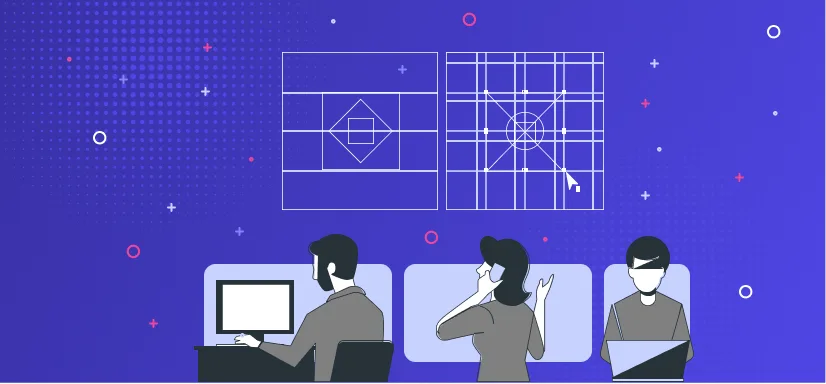- MACH
Why Digital Builders Are Switching to MACH-First Solutions


Digital builders have long been looking for ways to create flexible, scalable, and future-proof digital products. And over the years, they have worked with many different tools and technologies in order to achieve these goals. However, in recent years, a new approach has emerged that is quickly becoming the new standard for creating modern digital products: MACH-first solutions or, in other terms, MACH Architecture.
At their core, MACH-first solutions are about flexibility and scalability.
MACH-based solutions are designed to be modular, with each component (or microservice) serving a specific purpose. This allows digital builders to easily switch out different tools and technologies as needed without having to overhaul the entire system.
MACH-based solutions are designed to be cloud-native, they can easily scale up or down as needed to meet changing demand.
In addition to flexibility and scalability, MACH architecture also offers future-proofness. Because MACH-based solutions are designed to be modular, they can easily adapt to new technologies and trends as they emerge.
MACH Offers Flexibility for Ever-Changing Conditions
MACH architecture is designed to be flexible and adaptable to changing conditions. They allow builders to easily switch between different tools and technologies as needed in order to build exactly what they need at any given point in time. This means greater flexibility when it comes to building your product - no longer do you need to be locked into one set of tools or technology forever. This is especially important for digital builders who often face constantly evolving requirements and technologies.
One of the key features of MACH architecture that contributes to its flexibility is the use of microservices. In a MACH-based solution, the system is broken down into small, independent units of functionality known as microservices. Each microservice serves a specific purpose and can be developed, tested, and deployed independently.
This modular approach allows digital builders to easily swap out different tools and technologies as needed without having to overhaul the entire system. For example, if a company wants to switch from one payment gateway to another, it can simply replace the microservice responsible for handling payments without disrupting the rest of the system. This is in contrast to more traditional monolithic architectures, where changing one component can have cascading effects on the entire system.
Another way that MACH architecture offers flexibility is through the use of APIs. In a MACH-based solution, APIs are used to communicate between different microservices and allow them to work together to create a cohesive product. This API-first approach allows digital builders to easily integrate different tools and technologies into their solution, as well as expose their own functionality to other systems.
Finally, MACH architecture is often implemented using a headless approach, which means that the front end and back end are decoupled and can be developed and deployed independently. This allows digital builders to easily switch out different front-end technologies without having to rework the backend or vice versa. This is especially useful for companies that want to experiment with different frontend frameworks or platforms or that want to support multiple frontends (such as a web application and a mobile application) using a single backend.
MACH Offers Ease of Scalability Thanks to Cloud-Nativeness
MACH architecture is also designed to be cloud-native, which means it is built to be deployed and run on cloud infrastructure. This allows digital builders to easily scale up or down as needed to meet changing demands. For example, if a company experiences a sudden increase in traffic, it can quickly add more resources to its MACH-based solution to handle the additional load. This is in contrast to traditional monolithic systems, which can be more difficult to scale due to their reliance on a single, large codebase.
Additionally, MACH solutions are built as a collection of small, independent services. Each microservice is a self-contained unit of functionality that can be developed, tested, and deployed independently. This allows for greater flexibility and scalability, as each microservice can be scaled independently based on its specific usage patterns.
Moreover, together, the four principles of MACH architecture offer greater scalability for digital builders, as they allow for the creation of products that can easily adapt to ever-changing conditions. With MACH technologies, digital builders can develop and deploy products that are able to scale quickly and efficiently to meet the needs of their users.
With MACH, You Don't Need to Worry About Outdated Code and Tech Stack
But perhaps the most important reason why digital builders are switching to MACH-first solutions is that they are future-proof. Unlike many older technology architectures, MACH Architecture is completely modular and decoupled, allowing you to add new features or replace old ones with ease. This gives your product great longevity - no longer will you need to worry about system incompatibilities or outdated code from years past.
Since MACH solutions are built as a collection of small, independent services connected via APIs, each microservice or API can be developed, tested, and deployed independently. This means that if a particular part of the product needs to be updated or changed, only the relevant microservice needs to be modified rather than the entire application.
This can make it easier to update and maintain the product over time and can make it more resistant to obsolescence.
Ready to Join MACH Movement as a Digital Leader?
Together, the four principles of MACH architecture offer greater flexibility, scalability, and adaptability for digital builders, making it easier to update and maintain the product over time and making it more resistant to obsolescence.
With MACH technologies, digital builders can develop and deploy products that are able to adapt to changing conditions and remain relevant in the long term.
With its emphasis on flexibility, scalability, and future-proofness, MACH-first solutions are the perfect choice for modern digital builders everywhere.
Learn everything you need to know about MACH architecture

